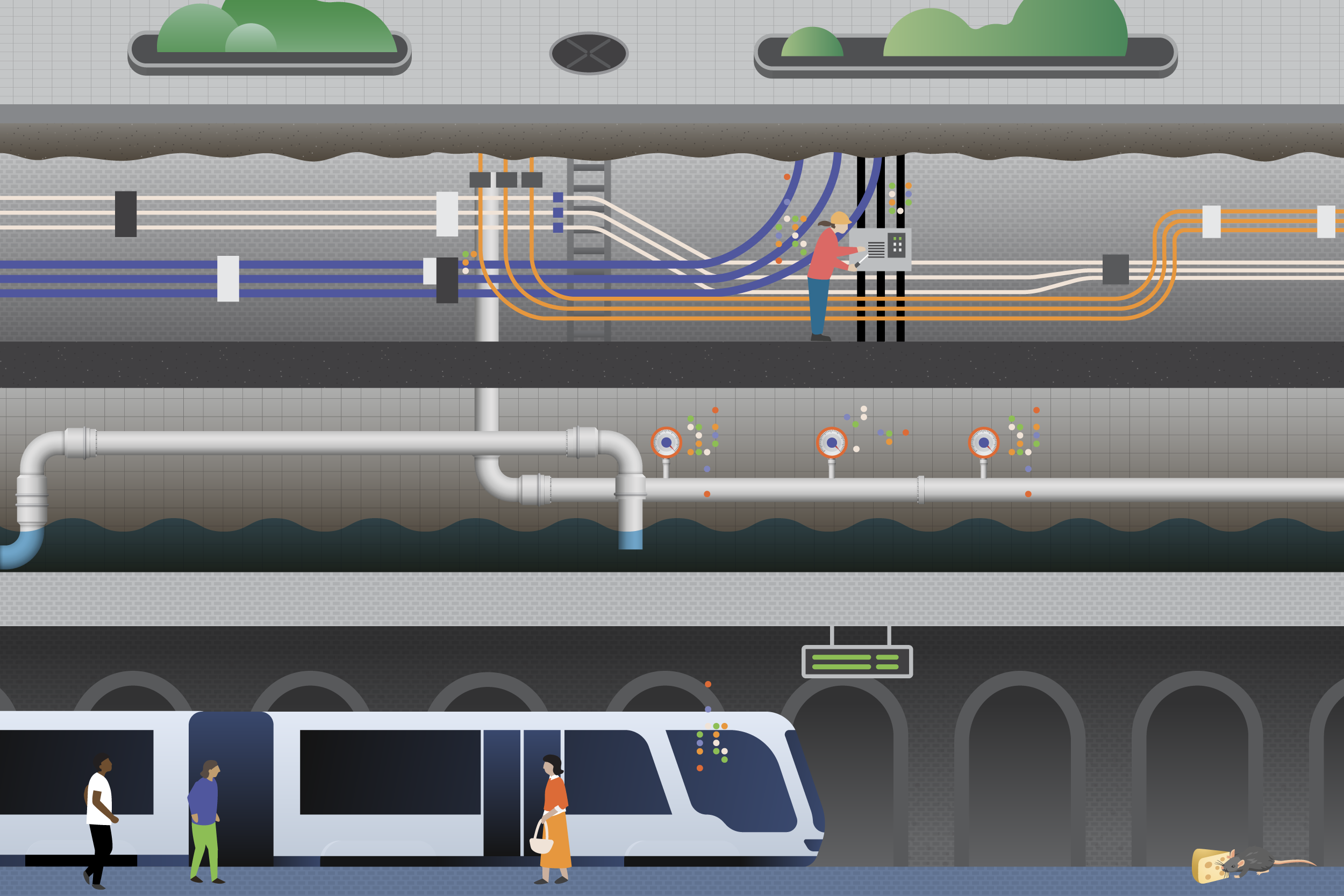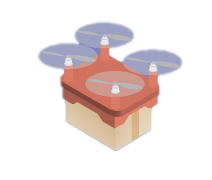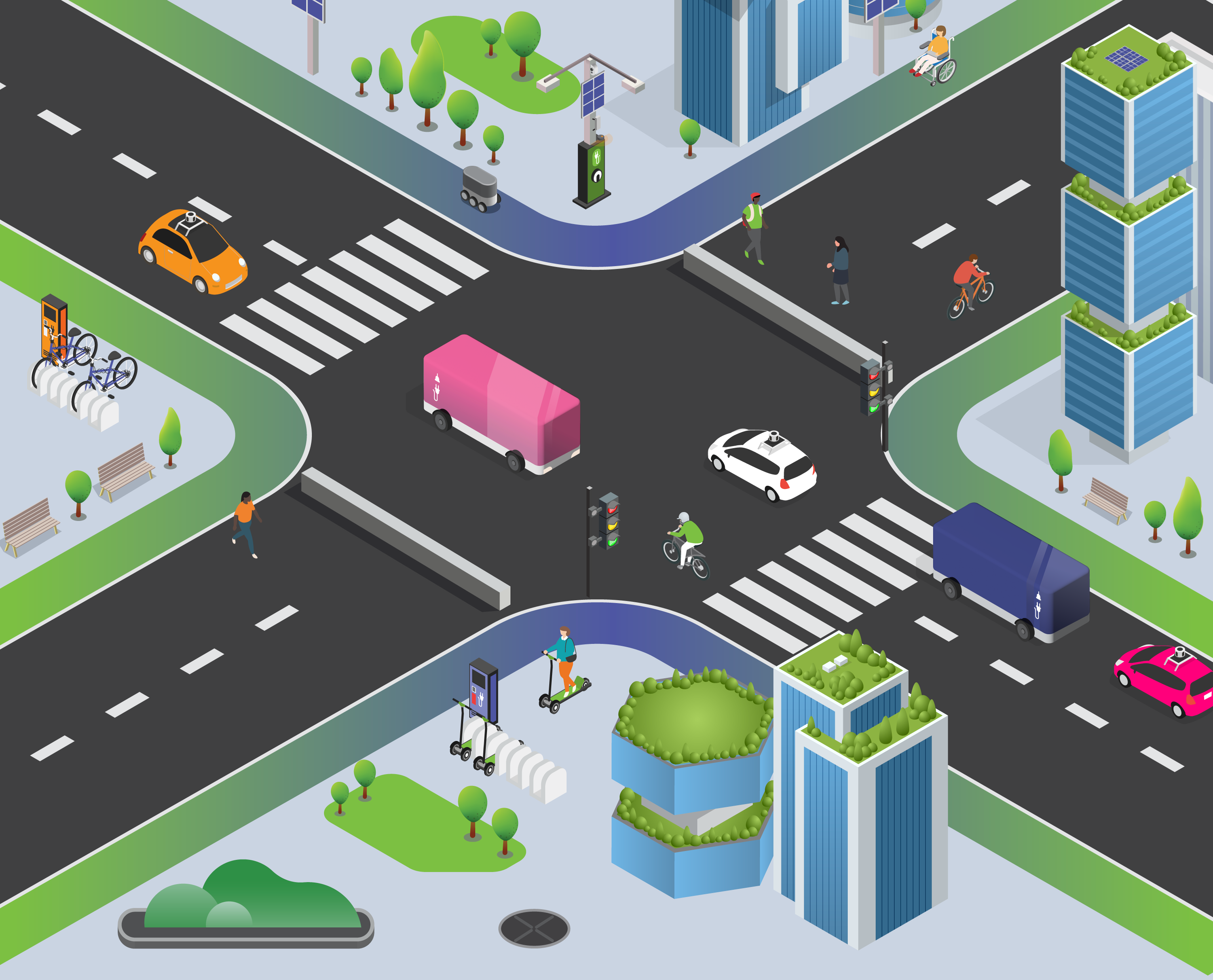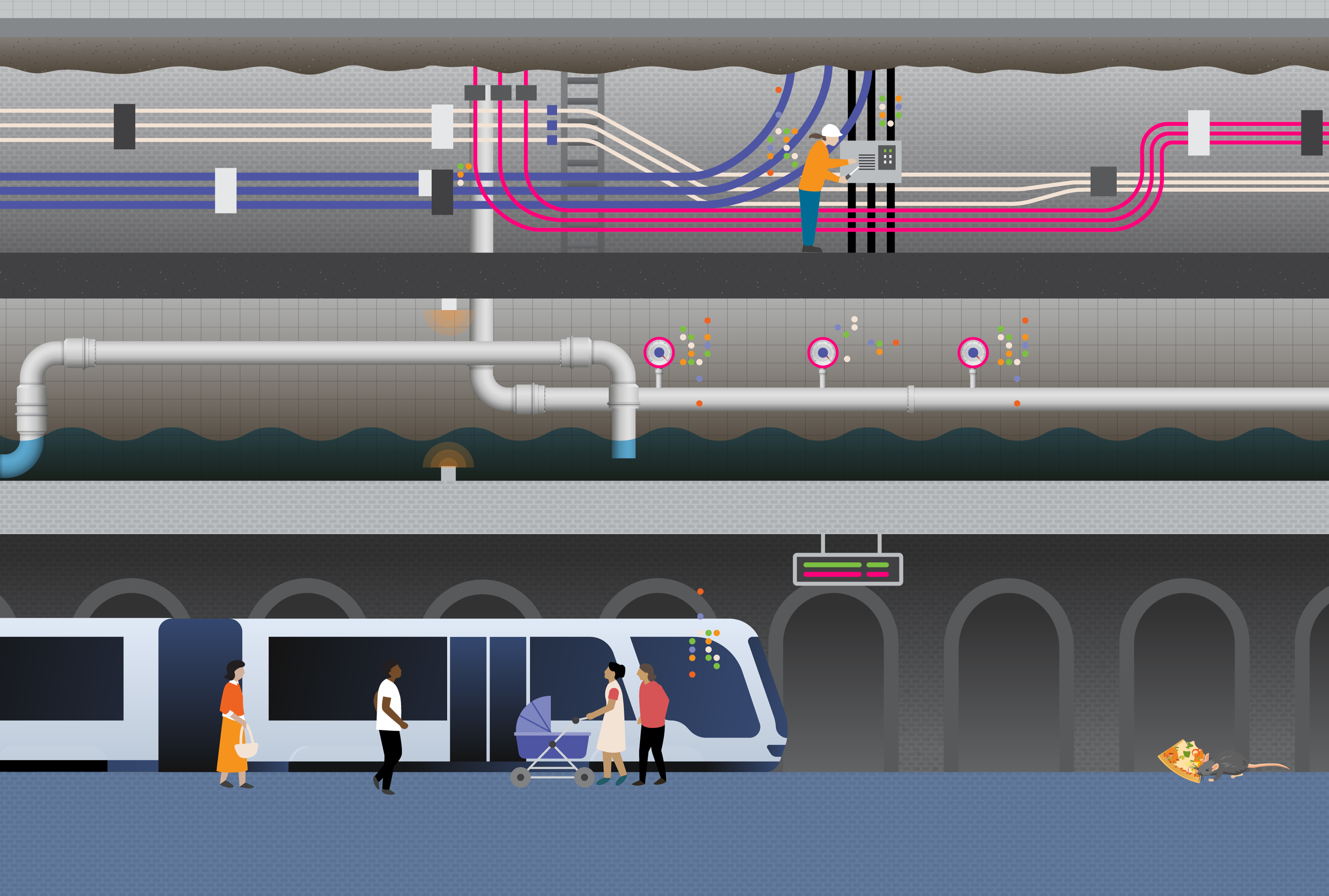In 2022, creating a smart city has as much to do with protecting residents from unnecessary tech investments as it does with embracing useful technological solutions.
That’s because many local officials have shifted how they think about the cities of the future. Building a smart city is no longer just about who can produce the most ambitious technological vision, but instead it’s about something much more logical: How tech can help fulfill the needs of city residents.
And those needs are significant. From making transportation more efficient to improving food security to maintaining a city’s sewers, officials have their work cut out for them. Often, tech can help with this work—but it can also serve as a distraction. It’s up to city officials to parse those distinctions.
For this series, we’ve written 10 stories that explore how cities and companies think tech fits into the vibrant, complex, and human world of urban life.
You can read them all below by clicking on the white plus signs throughout the interactive.


















How city CIOs would build a smart city
from scratch
































It’s difficult to figure out how new technology fits into any system—let alone the complex physical and social fabric of a city.
But we asked city CIOs to forget the complexity for a second, and focus on a simple question: If you could build a smart city from scratch, what would it look like?
Here’s what they said.
Inside Phoenix’s high-tech plan to grow its own veggies
As the number of farms in the US declines but the population continues to grow, cities are experimenting with indoor farming as a way to produce locally grown food for their residents.
And some cities, like Phoenix, Arizona—the country’s fifth-largest by population—are doing it with the help of federal funding.
Read on to learn how.
The humble streetlight is the backbone of the modern smart city
On a Paris street in the late 19th century, the first-ever electric streetlight flickered to life. Now, nearly 150 years later, the electricity coursing through streetlights and traffic poles powers a lot more than just lights.
Here are five key smart city technologies that municipalities are tacking onto lampposts.
Here’s what US city residents think about smart city tech
So, uh, what does the average person who lives in a city think about smart city tech, anyway? To find out, we asked the Harris Poll to run a nationally representative survey of 3,185 US city residents in late July.
Here’s our breakdown of the results.
First the emissions, then the grid: How buses could be a climate multiplier
Cities and towns looking to decarbonize both their transportation fleets and their grid have a secret weapon: school buses.
Around the US, newly electrified buses are serving as “batteries on wheels,” helping them do more than just decarbonize transportation.
Click here to go deep on EV buses.
Why robotaxi companies are looking for their goldilocks cities
In the mid-2010s, it seemed like every major US city would have a robotaxi network by this point. But as it stands, only two commercial services exist in the US, in Phoenix and in San Francisco—and even those have some limits.
Now, after a few years of setbacks, some autonomous-vehicle companies are becoming more intentional about how they select cities to partner with.
Click here to read about the shift.
Building a ‘smart’ transit system will require more than electric cars
EV adoption is growing fast, but this enticing tech—while necessary in some cases—is not sufficient to bring about smarter mobility on its own.
City planners in the car-centric Atlanta metro area are rethinking the ways mobility, housing, and infrastructure play a role in making city transit more sustainable.
Read about their efforts here.
Decarbonization goals will reshape city energy systems
Around the world, cities are pushing to decarbonize and create smarter, more reliable energy systems. Cities generate more than ~70% of global CO2 emissions, and the main sources of energy use in cities are transportation and buildings.
In 10 or 20 years, largely as a result of these pushes, life and work in cities could be powered differently in both explicit and subtle ways.
What changes can you expect? Read our piece to find out.
From flood control to disease prediction, a high-tech look at city sewers
Sewers are getting the high-tech treatment in cities ranging from Salt Lake City to South Bend, Indiana, thanks to an emerging crop of tech and science startups helping detect area pathogens, offload unnecessary cleaning for public works teams, and even avert sewer flooding.
Read about the tech transforming the deepest depths of cities.
These startups want to help cities keep the trains running on time
Keeping the trains running on time is no easy task—and a handful of tech startups want to help make it easier for cities to do so.
We spoke with the companies looking to remake the hardware and software that helps trains shuttle people around cities.
From AI to lidar, here’s what they’re working on.


Writing and reporting: Dan McCarthy, Hayden Field, Grace Donnelly, Jordan McDonald
Art direction and production: Dianna “Mick” McDougall
Illustration: Jing Zhang
Copy editing and fact checking: Becca Laurie
How city CIOs would build a smart city from scratch
It’s difficult to figure out how new technology fits into any system—let alone the complex physical and social fabric of a city.
But we asked city CIOs to forget the complexity for a second, and focus on a simple question: If you could build a smart city from scratch, what would it look like?
Here’s what they said.



The humble streetlight is the backbone of the modern smart city
On a Paris street in the late 19th century, the first-ever electric streetlight flickered
to life. Now, nearly 150 years later, the electricity coursing through streetlights and traffic poles powers a lot more than just lights.
Here are five key smart city technologies that municipalities are tacking onto lampposts.
Here’s what US city residents think about smart city tech
So, uh, what does the average person who lives in a city think about smart city tech, anyway? To find out, we asked the Harris Poll to run a nationally representative survey of 3,185 US city residents in late July.
Here’s our breakdown of the results.
First the emissions, then the grid: How buses could be a climate multiplier
Cities and towns looking to decarbonize both their transportation fleets and their grid have a secret weapon: school buses.
Around the US, newly electrified buses are serving as “batteries on wheels,” helping them do more than just decarbonize transportation.
Click here to go deep on EV buses.
Why robotaxi companies are looking for their goldilocks cities
In the mid-2010s, it seemed like every major US city would have a robotaxi network by this point. But as it stands, only two commercial services exist in the US, in Phoenix and in San Francisco—and even those have some limits.
Now, after a few years of setbacks, some autonomous-vehicle companies are becoming more intentional about how they select cities to partner with.
Click here to read about the shift.
Building a ‘smart’ transit system will require more than electric cars
EV adoption is growing fast, but this enticing tech—while necessary in some cases—is not sufficient to bring about smarter mobility on its own.
City planners in the car-centric Atlanta metro area are rethinking the ways mobility, housing, and infrastructure play a role in making city transit more sustainable.
Read about their efforts here.
Decarbonization goals will reshape city energy systems
Around the world, cities are pushing to decarbonize and create smarter, more reliable energy systems. Cities generate more than ~70% of global CO2 emissions, and the main sources of energy use in cities are transportation and buildings.
In 10 or 20 years, largely as a result of these pushes, life and work in cities could be powered differently in both explicit and subtle ways.
What changes can you expect? Read our piece to find out.
From flood control to disease prediction, a high-tech look at city sewers
Sewers are getting the high-tech treatment in cities ranging from Salt Lake City to South Bend, Indiana, thanks to an emerging crop of tech and science startups helping detect area pathogens, offload unnecessary cleaning for public works teams, and even avert sewer flooding.
Read about the tech transforming the deepest depths of cities.
These startups want to help cities keep the trains running on time
Keeping the trains running on time is no easy task—and a handful of tech startups want to help make it easier for cities to do so.
We spoke with the companies looking to remake the hardware and software that helps trains shuttle people around cities.
From AI to lidar, here’s what they’re working on.








from Tech Brew